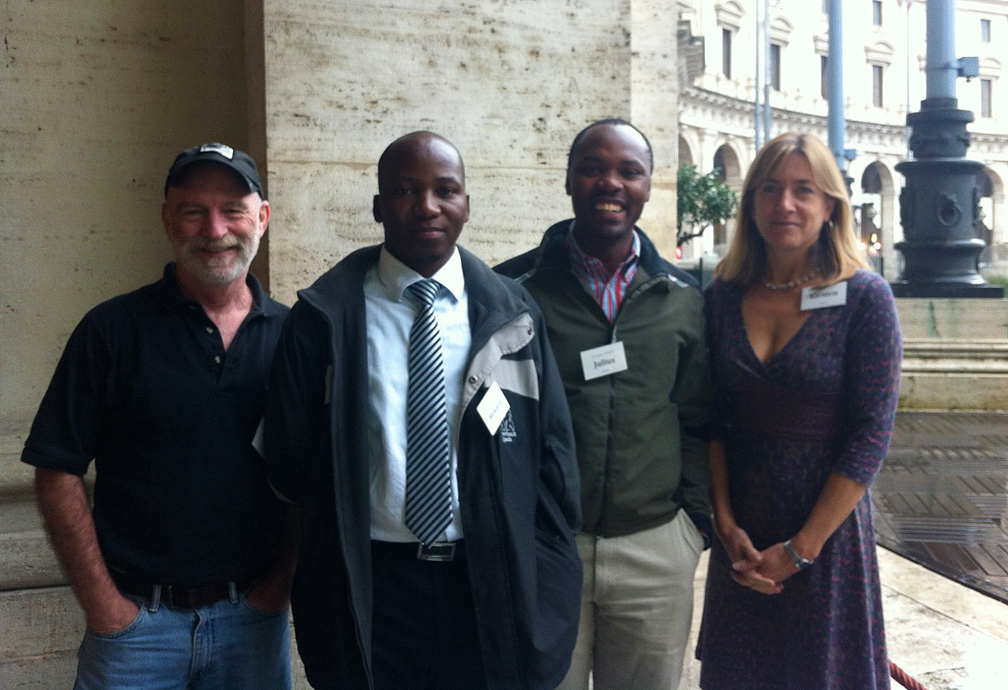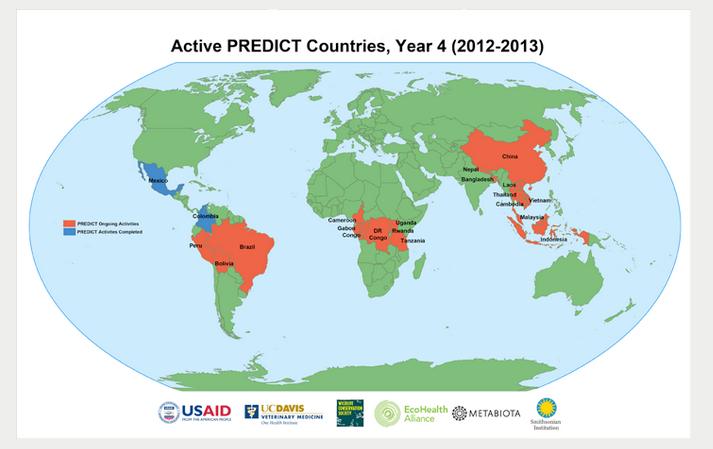Gorilla Doctors Attend Worldwide PREDICT Meeting in Rome
By Gorilla Doctors Staff on Friday, March 22nd, 2013 in Blog.Gorilla Doctors Co-Directors Drs. Kirsten Gilardi and Mike Cranfield, along with PREDICT vets Drs. Julius Nziza and Benard Ssebide traveled to Rome, Italy for a worldwide meeting on emerging pandemic threats last week. PREDICT staff from 23 different countries met to discuss protocols on how to get samples from humans, rodents and bats from areas of intense human-wildlife interaction.
All the PREDICT partners were represented in Rome: the University Of California, Davis, Eco Health Alliance, Metabiota Inc., Wildlife Conservation Society and the Smithsonian Institute. Part of the US Agency for International Development’s Emerging Pandemic Threats Program, PREDICT “builds on the understanding that humans, wildlife and the environment are all inextricably linked.”
 Gorilla Doctors Co-Directors Drs. Mike and Kirsten and PREDICT vets Drs. Benard and Julius in Rome, Italy.
Gorilla Doctors Co-Directors Drs. Mike and Kirsten and PREDICT vets Drs. Benard and Julius in Rome, Italy.
By Dr. Julius Nziza, Gorilla Doctors PREDICT Uganda Country Coordinator
The meeting benefited me both professionally and personally. It is the first time I’ve met other Project colleagues working in different countries and been able to share field experiences and discuss challenges and solutions in our work. I enjoyed sharing our success stories and the meetings were a great learning experience for me. Being in Rome with my fellow PREDICT staff, I was reminded of the grand picture of the project, how far we have come and what remains to be done, as well as how to fill the gaps in country so that we finish all that’s supposed to be done in the allocated time frame.
Attendees at the annual Rome PREDICT meetings included the members of the Executive Board, Regional Team Leaders, Regional Laboratory Leaders and the various Country Coordinators. There were PREDICT staff from Africa, South America and Asia present – all working in geographical hot spots for potentially pandemic emerging infectious diseases. The Project is in its 4th year of implementation so the main aim was to assess the accomplishments to date in each country and explore how to improve our sampling techniques.

In Rwanda, we still have more sampling to do in the areas of intense human-wildlife interaction. At each specific interface (ranging from high to low human-wildlife interaction), we need samples from a minimum of 35 animals in each location. In the PREDICT meetings, we discussed methods of obtaining samples from more difficult species such as the fruit bats that tend to roost high in trees.
At the end of the project, we hope to have sampled about 3000 animals in each of the PREDICT countries – and to have analyzed at least 2 samples from each animal. In Rwanda, I would say that we have obtained about 70% of the sample goal.
So far in Rwanda, the team has sampled almost 625 animals (99 bats, 131 nonhuman primates, 296 rodents and 99 other taxa). We have established a molecular laboratory for wildlife in Kigali of Biosafety level 2+, for cDNA extraction and we have processed about 300 samples. cDNA has been sent to Makerere Water Reed Laboratory at Makerere University for further processing.
We have successfully obtained test results from nonhuman primates (gorillas and golden monkeys that have high to low contact with humans) in Rwanda. PREDICT has tested 73 samples from 24 animals for 17 viral families. Thus far, 15 viruses have been detected in 19 animals. Of these 15, we have found 7 “known” viruses, 8 “novel” viruses (meaning they are new to science) and 4 viruses that are closely related to human viruses.
For more on the PREDICT program, click here.


 Donate
Donate